Manufacturer Sentiment Declines
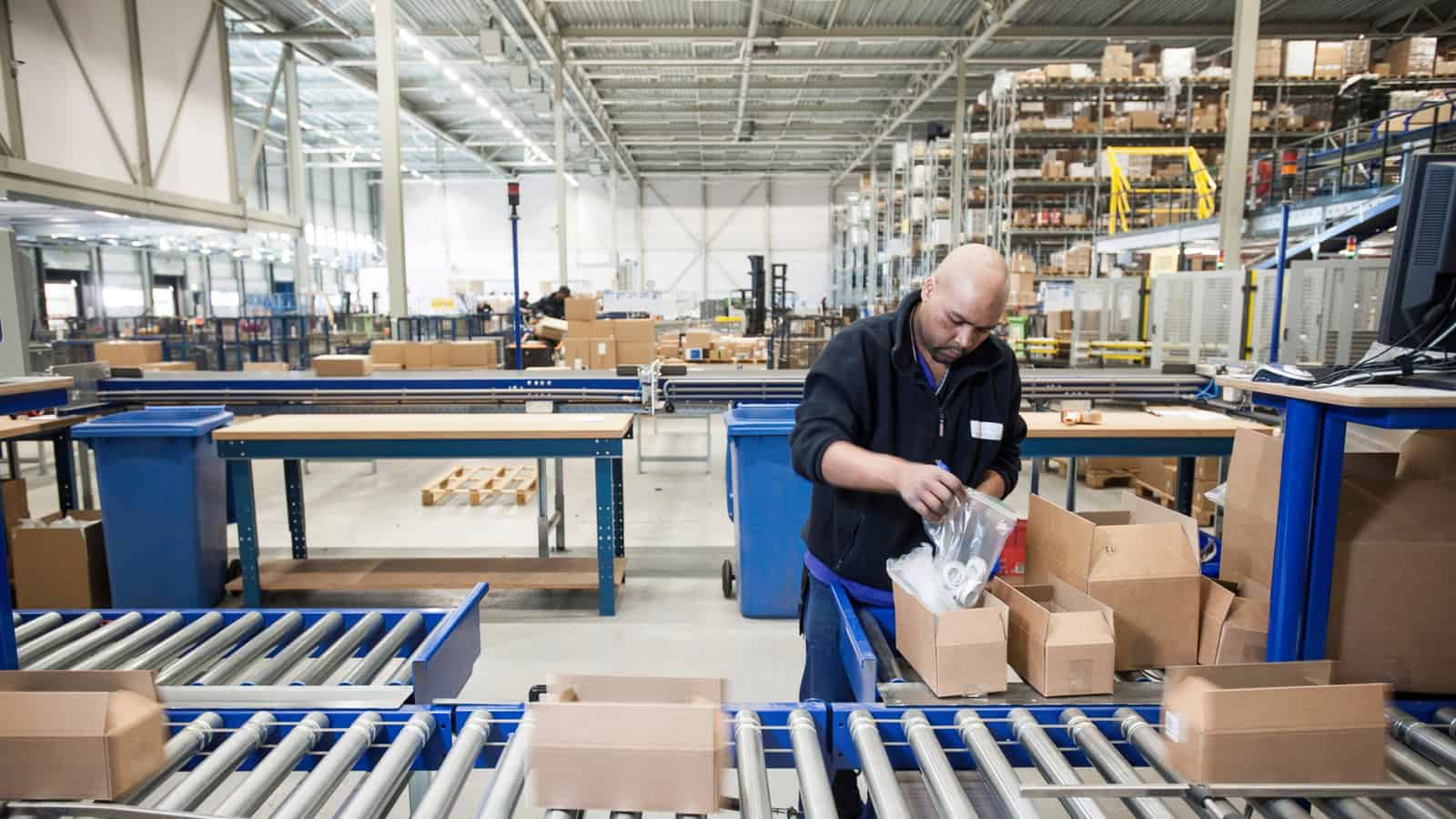
Manufacturer sentiment fell in the third quarter of this year, according to the NAM’s Q3 2024 Manufacturers’ Outlook Survey, out Wednesday.
What’s going on: Results of the survey, which was conducted Sept. 5–20, reflect “preelection uncertainty,” NAM President and CEO Jay Timmons said—but also larger economic concerns.
- “The good news is that there is something we can do about it,” said Timmons. “We will work with lawmakers from both parties to halt the looming tax increases in 2025; address the risk of higher tariffs; restore balance to regulations; achieve permitting and energy security; and ease labor shortages and supply chain disruptions.”
Key findings: Notable data points from the survey include the following:
- Some 62.9% of respondents reported feeling either somewhat or very positive about their business’s outlook, a decline from 71.9% in Q2.
- A weaker domestic economy was the top business challenge for those surveyed, with 68.4% of respondents citing it.
- Nearly nine out of 10 manufacturers surveyed agreed that Congress should act before the end of 2025 to prevent scheduled tax increases on manufacturers.
- The overwhelming majority—92.3%—said the corporate tax rate should remain at or below 21%, with more than 71% saying a higher rate would have a negative impact on their businesses.
- More than 72% said they support congressional action to lower health care costs through the reform of pharmacy benefit managers.
The last word: “When policymakers take action to create a more competitive business climate for manufacturers, we can sustain America’s manufacturing resurgence—and strengthen our can-do spirit,” Timmons said.
- “This administration and Congress—and the next administration and Congress—should take this to heart, put aside politics, personality and process and focus on the right policies to strengthen the foundation of the American economy.”
Solving the Talent Equation at the MI’s Workforce Summit
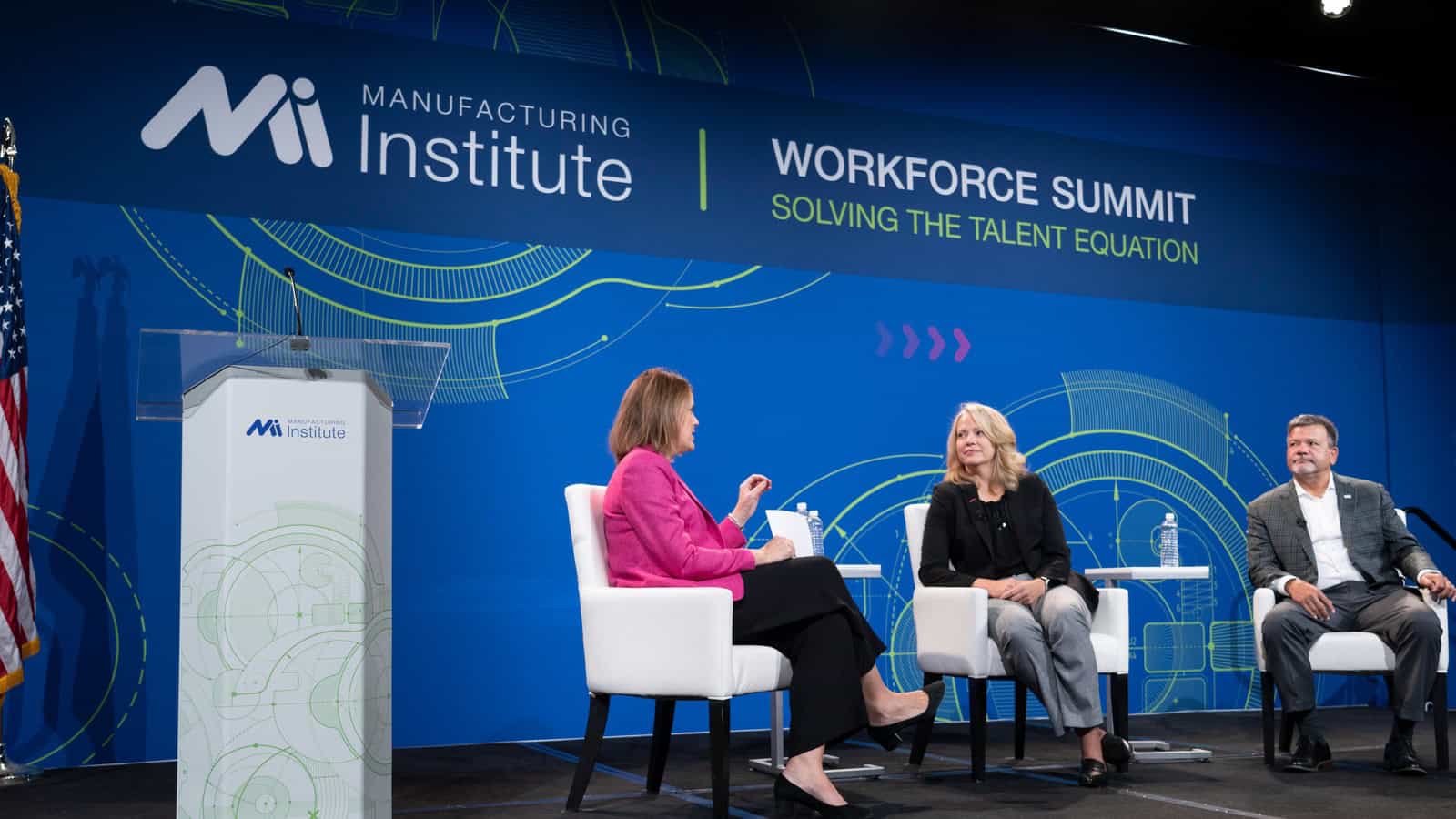
More than 300 leaders and experts gathered in Minneapolis last week to discuss the industry’s talent challenges, from hiring to training and retaining. The Manufacturing Institute’s annual Workforce Summit convened manufacturers, partners from education and training groups, philanthropy leaders and representatives from community-based organizations to share insights and brainstorm solutions.
The backdrop: With more than 500,000 open jobs in the industry, manufacturing leaders are intent on solving the talent equation.
- MI Chief Program Officer Gardner Carrick provided context for attendees. “For the last 7+ years, manufacturers have told the MI that the single biggest challenge they face is finding the right people to employ,” he said. “It is the crisis right in front of us.”
- Carrick urged attendees to “act now, because the system needs help.” However, he also noted that this crisis will take time to fix, saying that manufacturers should “be patient, but be committed.”
Quick insights: The participants brought many new ideas and fresh perspectives to the gathering. Here are some of the highlights:
- Recruitment and hiring: NTT DATA led a session on artificial intelligence technologies that can help with talent attraction, while other sessions focused on changing Americans’ perceptions of the industry and demonstrating that manufacturing is a “cool” field to work in.
- Retention: Mark Rayfield, CEO of Saint-Gobain North America and CertainTeed, highlighted the importance of culture as a retention tool, saying, “Culture is everything. Employees want to work for a place where they are respected.” In a separate session, Jill Wyant, president and CEO of Madison Air, shared why their cultural value of frontline obsession guides how they attract and retain their frontline employees.
- Training: One session focused on training frontline supervisors in methods that boost retention of frontline workers. Other sessions focused on using the FAME USA model (of combined accreditation and training) to cultivate talent for manufacturing facilities.
- Preparing the next generation: Ketchie Inc.’s Andy Silver spoke about the company’s Opportunity Knocks program, an unpaid internship program for high school students that offers real-world learning experience and mentorship. Programs like these can transform young people’s perceptions of the manufacturing industry and set them on rewarding career paths, as Silver noted.
Did you miss it? Don’t worry! There are plenty of ways to get involved in the solutions being driven by the MI, the NAM’s 501(c)3 workforce development and education affiliate.
- Check out the MI’s Solutions Center, a new initiative that will provide manufacturers innovative resources and opportunities to access solutions and best practices on how to tackle the challenges of recruiting, training and retaining talent in today’s competitive landscape. Attendees got a first look, but now we’re sharing it with everyone.
- Get updates directly from the MI on the latest workforce insights and receive information about registering for next year’s Workforce Summit in Charlotte, North Carolina, taking place Oct. 20–22, 2025.
- Want more labor data and insights? Sign up for the MI’s comprehensive Workforce in Focus newsletter to stay up to date on the latest workforce trends.
The last word: “The MI and manufacturers across the country are changing the narrative, raising awareness and finding new ways to get people in the door and retain them,” said MI President and Executive Director Carolyn Lee. “As we face workforce shortages and retention challenges, events like the MI’s Workforce Summit are necessary to help the industry share important insights and ensure the readiness of the future manufacturing workforce.”
New DOD Loan to Fund “Critical Technologies” Manufacturing
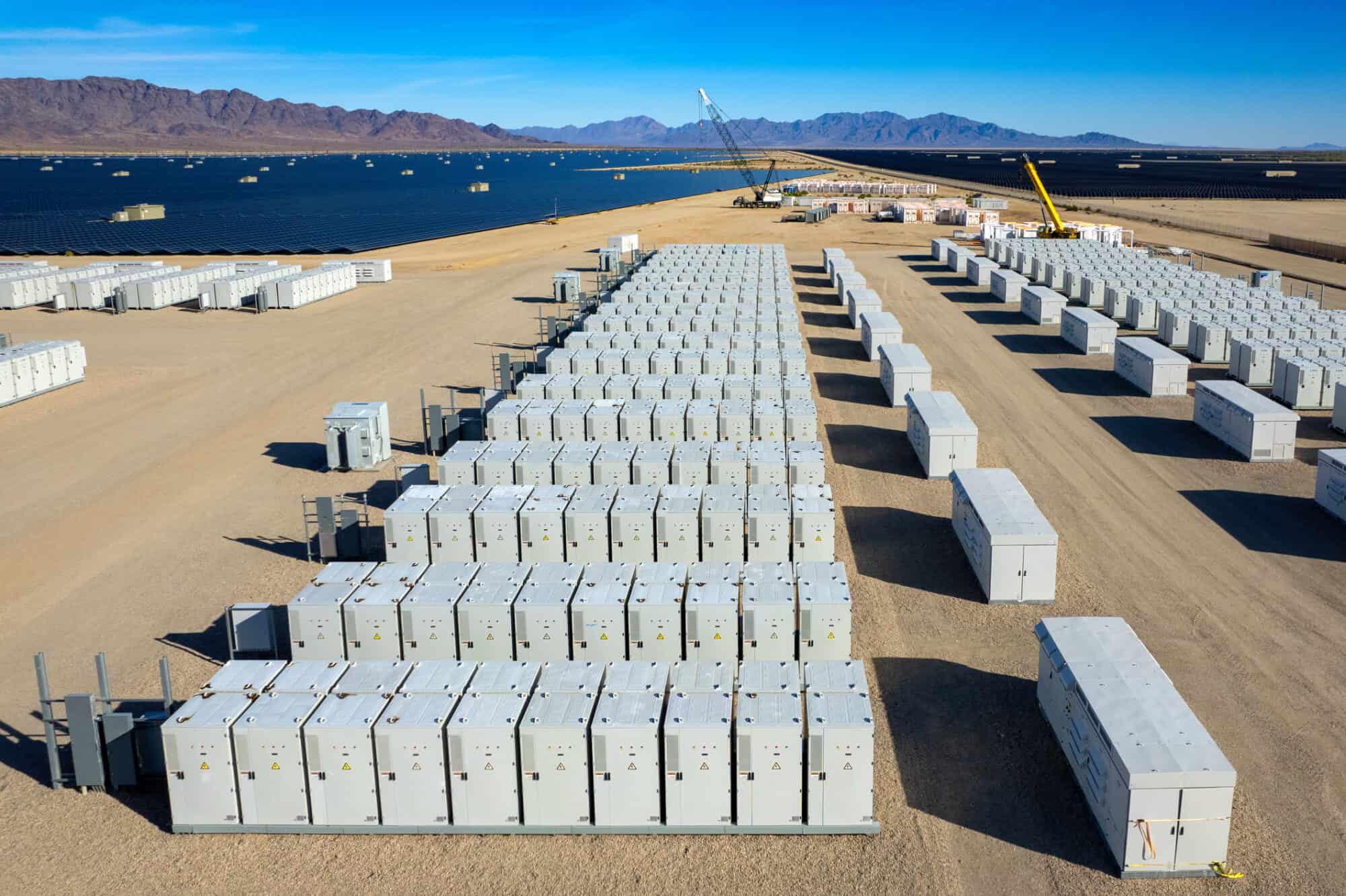
The Defense Department’s Office of Strategic Capital is now accepting applications for flexible direct loans to build, expand and/or modernize “critical technologies” facilities (Federal Register).
- It’s also seeking input from companies and trade associations on the Defense Department’s loan program, via a Request for Information open through Oct. 22 (Federal Register).
What’s going on: The OSC’s credit program, launched Sept. 30, aims “to attract and scale private capital in industries and technologies that are critical to America’s national and economic security,” according to the Defense Department. This is part one of the application process.
- The financing is geared toward manufacturers that must spend significantly on industrial or specialty equipment to create new assembly lines in existing facilities.
- The money is also intended to help them cover “soft” expenses, such as factory preparation and installation, associated with critical technology projects.
Why it’s important: “The funding from this program could benefit manufacturers of all sizes that are working to expand their businesses and product lines in critical areas of the economy,” said NAM Director of Energy and Natural Resources Policy Mike Davin.
- The OSC loans offer flexible terms, a U.S. Treasury-comparable interest rate, long repayment periods and deferred payments.
Who’s eligible: Manufacturers within the 31 “Covered Technology Categories”— which include advanced manufacturing, cybersecurity, battery storage and spacecraft—are encouraged to apply.
- There is no company-size or employee-number threshold or limit, and manufacturers with existing federal grants are eligible.
Manufacturers Help Those Affected by Hurricane Helene
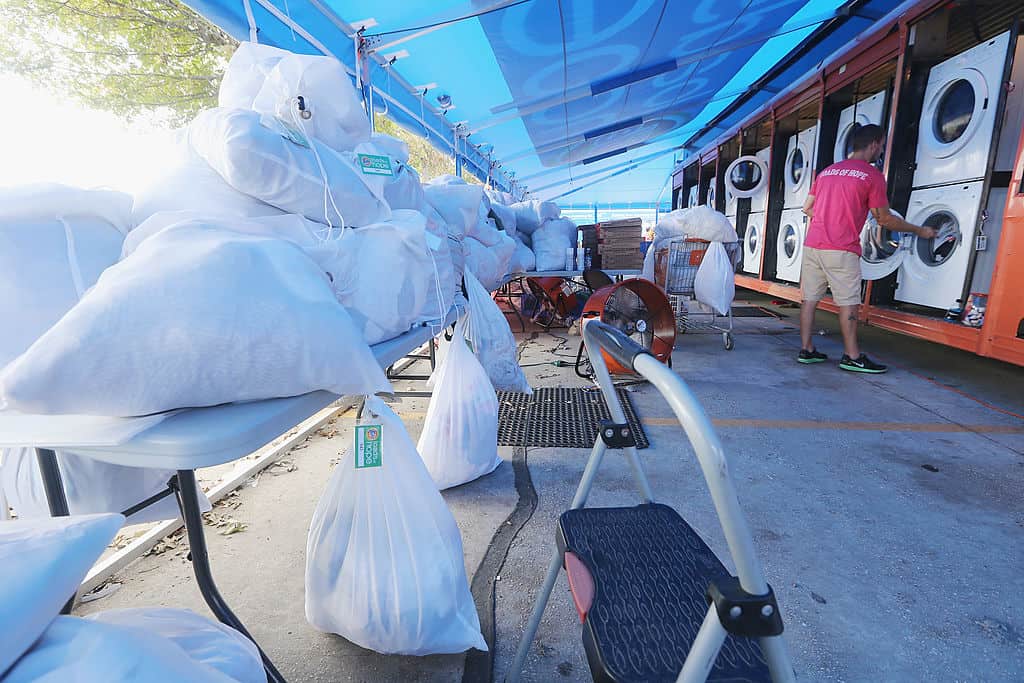
Within days of Hurricane Helene’s landfall, manufacturers were reaching out to help those who had been affected.
What’s going on: Companies from an array of industries are volunteering their resources, time and energy to getting storm victims essential items. Helene, which made landfall in Florida last Thursday, has killed at least 189 people and left more than 1.2 million customers without power (ABC News).
- Toyota is matching donation contributions made by its U.S.-based employees to the American Red Cross, disaster relief organization SBP and other nonprofits. The auto manufacturer is also offering payment relief options to those affected.
- Norfolk Southern Corp. has donated $100,000 to the American Red Cross, which is undertaking relief work across multiple states, including North Carolina, Florida, Georgia and Tennessee. The company’s Employee Disaster Relief Program is also giving employees affected by the storm grants for qualified expenses and losses.
- DENSO North America Foundation, the philanthropic group of global automotive components manufacturer DENSO, is donating $200,000 to the American Red Cross in support of disaster relief across southeastern states.
- Procter & Gamble’s Disaster Relief is partnering with Walmart and Matthew 25: Ministries, an international aid organization, in their recovery efforts in the hard-hit Florida cities of Perry and St. Petersburg. P&G resources will go toward a Tide Loads of Hope Mobile Laundry Unit, powered by Matthew 25: Ministries, to offer free, full-service laundry to responders and affected residents. Shower trailers with hot water will also be provided.
Additional resources: SBP and Good360 offer manufacturers disaster preparedness resources and training when natural disasters hit.
- “Hurricane Helene has been devastating, leaving many without access to power and vital resources,” NAM President and CEO Jay Timmons wrote in a social post Wednesday. “Manufacturers looking for recovery resources or looking to provide supplies can connect with SBP via sbpusa.org and Good360 via good360.org.”
Share your stories: Are you helping those affected by Helene? Tell us how by emailing [email protected].
NAM Welcomes New Chief Economist

The NAM has a new chief economist.
Victoria Bloom, who was most recently the economist for the Senate Commerce, Science and Transportation Committee minority staff, joined the NAM and its 501(c)3 workforce development and education affiliate, the Manufacturing Institute, this summer. She had worked on Capitol Hill since 2017.
Our view: “Manufacturing in the U.S. is a life-changing force for good, providing well-paying jobs and career opportunities and products that improve the quality of life for everyone,” NAM President and CEO Jay Timmons said. “Victoria will help us tell this story with compelling data, which will demonstrate the real impact of policy decisions and illustrate the modern manufacturing resurgence.”
- Added MI President and Executive Director Carolyn Lee: “With the addition of Victoria to the MI team as the head of research, we look forward to expanding our portfolio of studies on the key workforce and competitiveness issues facing manufacturers.”
Legislative chops: Bloom, who holds a bachelor’s degree in economics from Louisiana State University and a master’s degree from George Mason University, previously worked for Sen. David Perdue (R-GA) and Rep. Gary Palmer (R-AL), in addition to her work on the Senate Commerce Committee.
- As Senate Commerce Committee economist, she served as lead economic and budgetary adviser to Ranking Member Ted Cruz (R-TX) and the minority committee staff.
Glad to be here: “After years of working on Capitol Hill and lending my economic expertise to policy debates, I am excited to focus my efforts on the 13 million people who make things in America,” Bloom said.
Sylvamo Supports Healthy Forest Ecosystems

With a name that means “love of forests,” Sylvamo has a built-in dedication to sustainability. And the Memphis, Tennessee–based paper company, which spun off from International Paper in 2021, lives up to its moniker.
A holistic approach: “We use the whole tree in the manufacturing of our products,” Sylvamo Chief Sustainability Officer James McDonald told the NAM. “We use the fiber from the wood to make our paper, and all the residuals—think of the sticky stuff in trees—we capture and use to generate energy.”
- This process supplies the company with approximately 85% of its global energy needs, according to McDonald.
Planting the world: Sylvamo, which produces well-known brands like Hammermill, Accent Opaque, Springhill and HP Papers, is committed to restoring and protecting forests worldwide.
- “Our entire business depends on the sustainability of forests,” McDonald said. “It turns out your third-grade science teacher was right—photosynthesis does work. The more trees we grow, the more we can clean the air and protect the environment.”
Big ambitions: Sylvamo has conserved, enhanced or restored more than 37,000 acres of forestland to date. It has set the lofty goal of reaching 250,000 acres of forestland by 2030.
- To that end, the company is supporting the Nature Conservancy’s work to create a healthy, resilient and connected Appalachian landscape in the U.S. and the World Wildlife Fund’s work to restore Brazil’s Atlantic Forest, while also working with individual landowners to enhance forest management practices in France.
Diverse sources: Sylvamo primarily sources local fiber to manufacture its products in Europe, Latin America and North America, a strategy that enables a smaller environmental footprint, McDonald said.
- “Most of the fiber is sourced very close to [each] mill, which supports our low-cost assets in each region and this global footprint advantage in those markets,” he added.
GHG goal: The company is committed to a greenhouse gas reduction goal of 35% from a 2019 baseline across all three emissions scopes, an ambitious goal that demonstrates a commitment to improve Sylvamo’s climate impact continuously, according to McDonald.
- A quick refresher: Scope 1 refers to direct emissions, Scope 2 to indirect emissions associated with the purchase of power and Scope 3 to indirect emissions produced by a company’s value chain.
- Above all, “we try to be efficient with the energy we do use so that we can use less to produce our products,” McDonald told us.
A vital commodity: Paper and paper products continue to “play a crucial role every day in people’s lives,” said McDonald—and they are some of the world’s most recyclable materials.
- Some 68% of paper in the U.S. was recovered in 2022. In some parts of Brazil, the percentage is about 60%, and in Europe, it’s near 80%, he added.
The last word: “Just think about it: We use paper for education, communication, entertainment and more,” McDonald pointed out. “Our product plays a huge role in society and has a good lifecycle story.”
Click Bond Brings AI into Supply Chains

Manufacturers have always been on the cutting edge of tech development and integration—and it’s no different with artificial intelligence. Today, Click Bond, Inc., a manufacturer of adhesive-bonded fasteners for aerospace and industrial use, is finding applications for AI in the supply chain.
The challenge: Supply chain management is an inexact art, according to Click Bond Chief Executive and NAM SMM Vice Chair Karl Hutter, and technology like AI has the capacity to strengthen operations.
- “There are many spots … [where] a guess has to be taken or padding has to be put in because of the known unreliability of data,” said Hutter. “This is where technology has a big role to play.”
Improving efficiency: AI can break through these challenges, separating signal from “noise” and avoiding presumptions that can cause inefficiencies.
- “We need to have a better sense of the supply, the demand, the schedule,” Hutter said. “This is where those kinds of tools can fit in—so we as a supplier can optimize our production runs, meet our customers’ needs efficiently and be responsive to just-in-time supply.”
- “AI does that key job of finding what matters and correlating historic data and making predictions in a way a human can’t,” he continued.
Translating data: Because there is no single, industry-wide method for formatting data, it can be difficult for manufacturers to combine their knowledge. Happily, AI can help.
- “My data tables might look different than my customers’ and suppliers’,” said Hutter. “AI can understand the rules of data structure, and that of our customers and suppliers, and it can be a translator between them.”
- For example, Click Bond has supplied products to the Boeing Company for almost 40 years, contributing to every type of product made across its military, civil and space divisions. AI stands to take that collaboration to an even higher level.
Enhancing production: AI tools also help manufacturers during the production process by translating different kinds of data and pointing toward solutions.
- “[AI’s translation capability] applies to the technical data environment, too—how you go from a model and simulation to a produced part,” said Hutter. “It’s the same thing. How do you do technical data interchange confidently and securely? This technology [can help].”
Advice for other manufacturers: Hutter recently took part in a workshop on these tools, and he encourages manufacturers who are curious about the technology to find similar opportunities.
- “There is nothing that makes these concepts come to life [like] getting your hands on them,” said Hutter. “You can sit there and furrow your brow and read a bunch of articles, but the best thing to do is to find one of the many opportunities for some hands-on education—and you’ll start to understand what these tools can do.”
Foxconn Shines a Light on Solar Energy
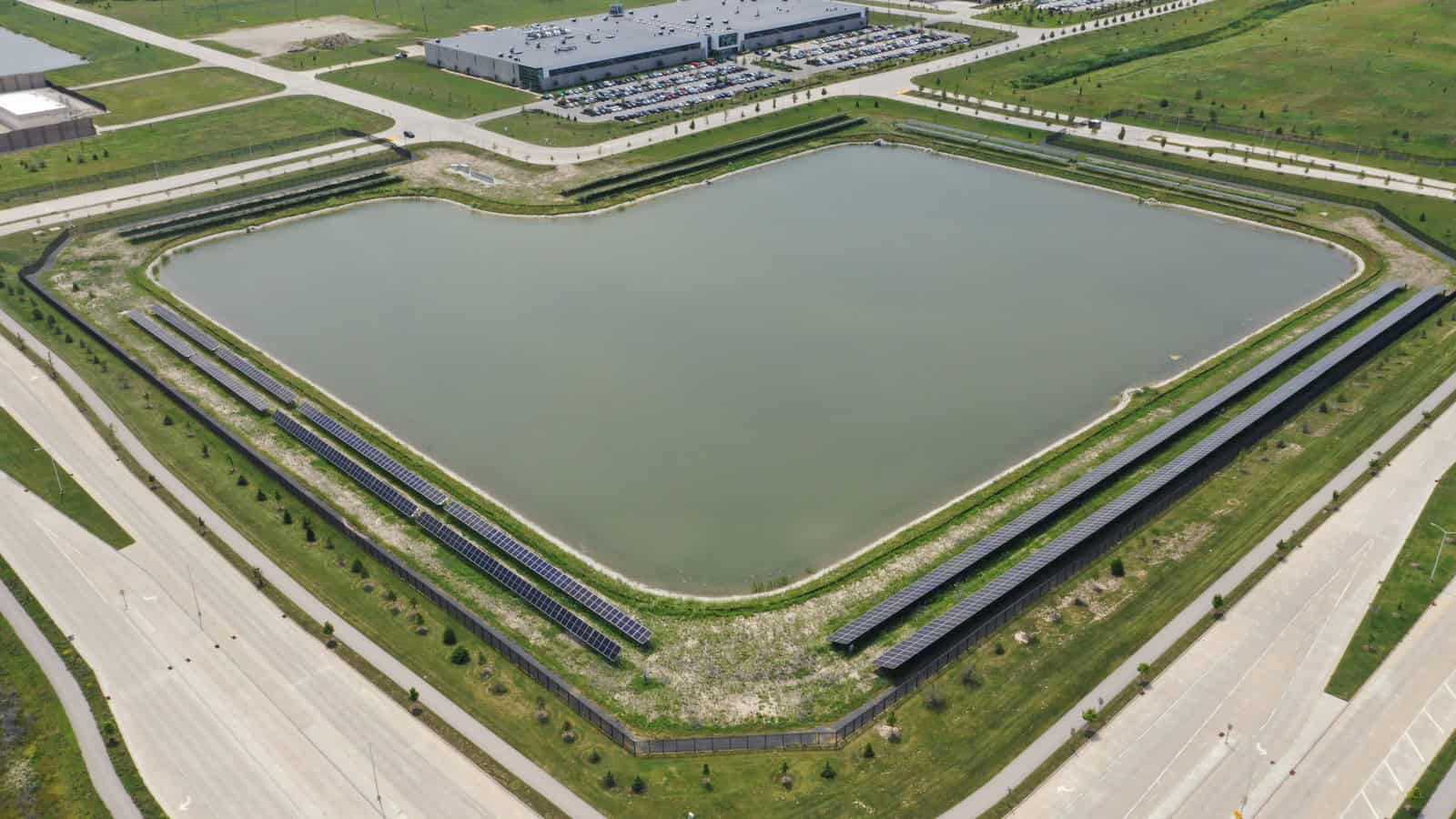
Manufacturers across the U.S. are taking new steps toward sustainability. For Foxconn—a consumer electronics contract manufacturer and solutions provider with U.S. headquarters in Milwaukee, Wisconsin—that effort is about to get a big boost.
The project: Foxconn is developing a massive field of 2,000 solar panels covering nearly eight acres of land around a retention pond at its Racine County campus in Mount Pleasant, Wisconsin.
- The panels are expected to go live at the end of July, when they’ll generate approximately one megawatt of power, which will be used to manufacture data servers.
- “That’s about 1,200 metric tons of carbon dioxide saved every year and enough energy to power about 300 American homes,” said Robert Schlaeger, head of U.S. government relations for Foxconn.
The big picture: The project—a partnership between Foxconn and utilities provider We Energies—is part of a bigger initiative from Hon Hai Technology Group in Taiwan.
- Hon Hai already uses green energy for about 40% of its power consumption across global operations. It has pledged to run wholly on green energy by 2040 and to achieve net-zero emissions by 2050.
- “This is really a top-down approach for the entire technology group under the leadership of our Chairman Young Liu,” said Schlaeger. “You can see how that trickles down to the things we try to achieve at a regional level and within those regions, down to the site level.”
The impact: In 2022, the technology group spent $75 million globally on 1,877 energy-saving projects. Schlaeger views sustainability projects such as the Foxconn solar field as an important signal of the company’s commitment.
- “As Foxconn grows and responds to market demand around the world or within the United States, renewable energies demonstrate the company’s commitment to environmental stewardship across supply chains—to our customers and to our communities,” said Schlaeger.
The business case: Investments like this one are important to the company’s long-term future, but they also matter to customers right now.
- “We have customers who want to know that they are employing contract manufacturers like us that are producing their product in a responsible manner,” said Schlaeger. “What type of energy are you using? Where does the energy come from? These questions are important to our customers—and we want to show them that whether you look to our aspirations as a whole, or down to the site, you can see our commitment to green energy.”
Emerson Finds Energy in Sustainability
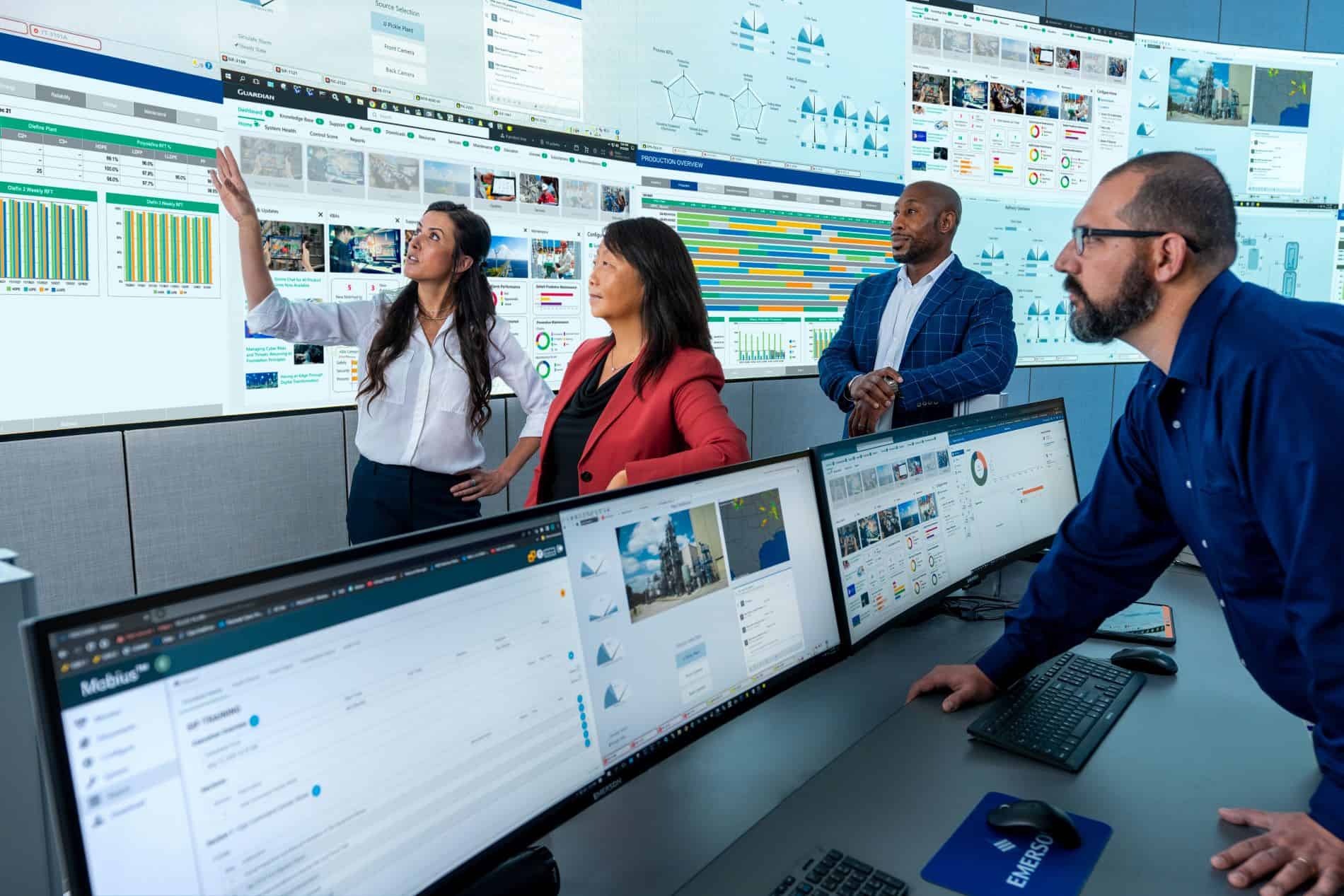
When Emerson’s first-ever Chief Sustainability Officer Mike Train talks about his company, his enthusiasm shines through.
- “What we do to enable our customers is huge,” said Train. “We have an important role to play—and I get a lot of energy out of that.”
An aggressive push: The technology and engineering company, headquartered in St. Louis, Missouri, has been making big moves in sustainability over the past few years—beginning with a goal in 2018 to reduce some of its greenhouse gas intensity by 20% over 10 years.
- At the time, the goal was ambitious, and the company wasn’t quite sure how it would achieve it. But employees banded together and pulled it off.
- “We actually achieved the goal in 2022—six years early,” said Train. “But the act of putting out a goal and not knowing exactly how we’d solve for it … has been driving the culture of our company. Our employees are proud we put it out there, proud to have participated, and it’s activated thousands of people to get excited about what we’re doing.”
An inclusive approach: Since then, the company has applied a range of tactics. From “energy treasure hunts,” in which teams search for energy waste in facilities, to renewable energy procurement and collaborations with supply chain partners, Emerson is finding interesting and inclusive ways to make an impact.
- The company has gone from getting 3% of its power from renewables to getting to 49% from those sources. And it now has a commitment to use 100% renewable energy by 2030.
- Emerson is setting other big goals, too, from net-zero operations by 2030 to a zero-waste-to-landfill pledge, along with other water and biodiversity actions.
An effective framework: The company has a three-part approach to its sustainability practices.
- Greening Of Emerson involves the actions Emerson is taking to reduce its own footprint by minimizing waste and engaging its supply chain.
- Greening By Emerson involves the company’s activities to help a wide range of manufacturing customers improve their own sustainability, often through Emerson’s automation portfolio and expertise. This, according to Train, is where Emerson has its biggest opportunity for impact.
- Greening With Emerson refers to the company’s work with government and research organizations on policy and innovation, offering technical expertise and manufacturing perspective to help drive action.
A group effort: Train has seen the company coalesce around these goals—from the sustainability team he works with every day (“they bring a lot of energy and passion to what we’re doing”) to the rest of the company’s 74,000-person workforce.
- “The fun part of sustainability is everyone is learning it together,” Train continued. “You’re allowed and encouraged to borrow ideas from each other, so the collaborative part of sustainability is an awful lot of fun.”
NAM, Allies to Biden: Intervene in Port Talks Now
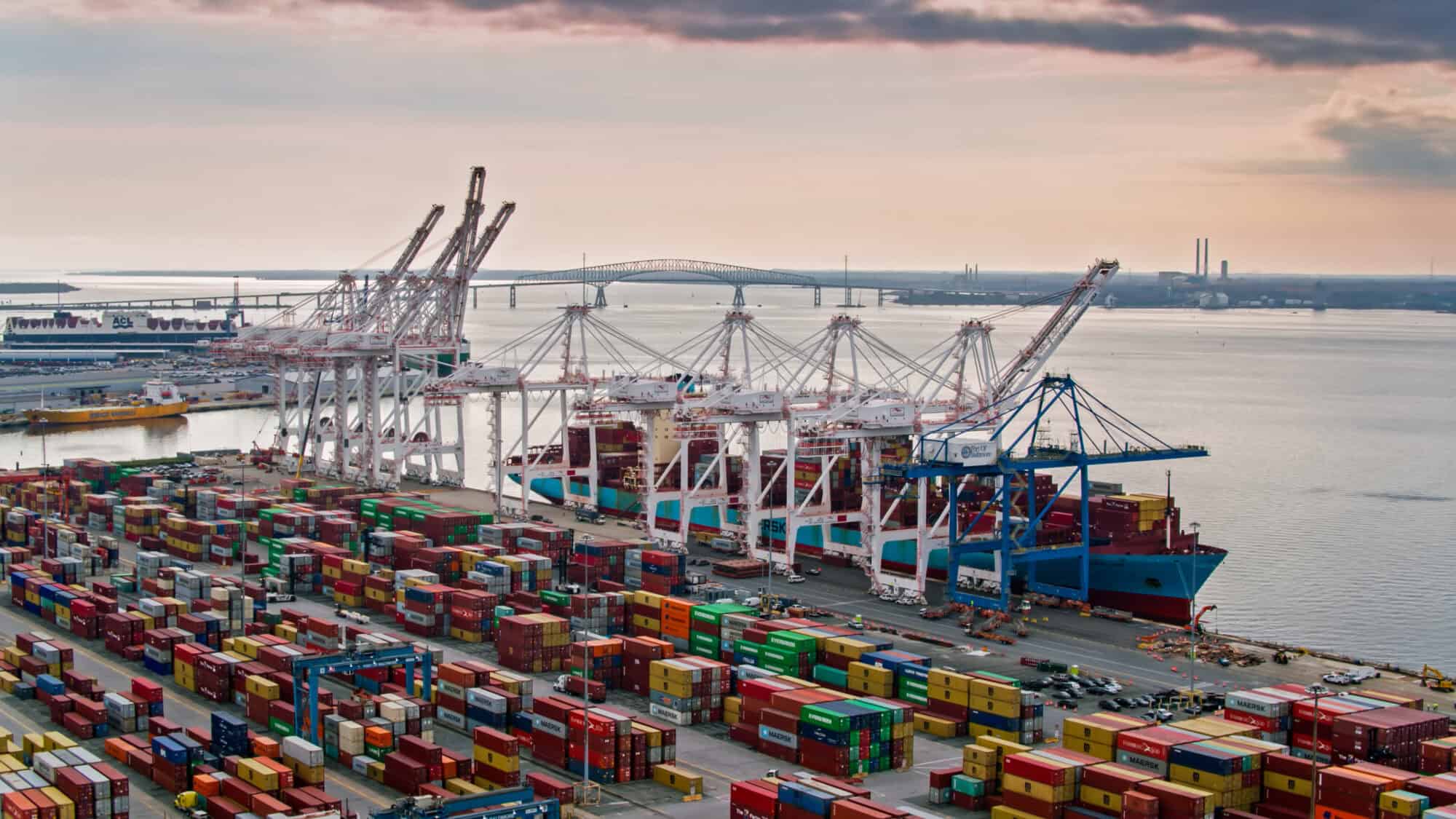
A labor strike on the U.S. East and Gulf Coast strike would have dire consequences for the maritime supply chain, the NAM and partner organizations told the Biden administration this week—which is why it’s vital the administration intervene now to restart stalled labor negotiations between dockworkers and an alliance of port operators and ocean carriers.
What’s going on: “Earlier this month, contract negotiations broke down between the International Longshoremen’s Association and the US Maritime Alliance,” Bloomberg Government (subscription) reports. “The current agreement, which covers about 45,000 dockworkers at facilities including six of the 10 busiest US ports, expires Sept. 30.”
- The NAM and more than 150 other industry organizations on Wednesday urged the administration to “immediately work with both parties to resume contract negotiations and ensure there is no disruption to port operations and cargo fluidity.”
Why it’s important: Other global shipping-related setbacks and threats mean the U.S. cannot withstand another challenge, the groups said. Continued Houthi terrorist attacks on commercial ships in the Middle East have resulted in “congestion and lack of equipment at overseas ports, carrier capacity issues as they continue to divert vessels away from the Red Sea and increased freight rates.”
Precedent set: Last September, after 14 months of negotiations and several work stoppages and walkouts, West Coast dockworkers reached a labor agreement with the Pacific Maritime Association—following NAM-urged intervention by the Biden administration.
- “We witnessed a significant shift of cargo from the West Coast to the East Coast and Gulf Coast ports because of the challenges and uncertainty during the last West Coast port labor negotiations,” said the groups. “While much of that business has remained at the East Coast and Gulf Coast ports, we are starting to see a shift back to West Coast gateways, where a long-term contract is in place, especially as we enter the busy peak shipping season.”
